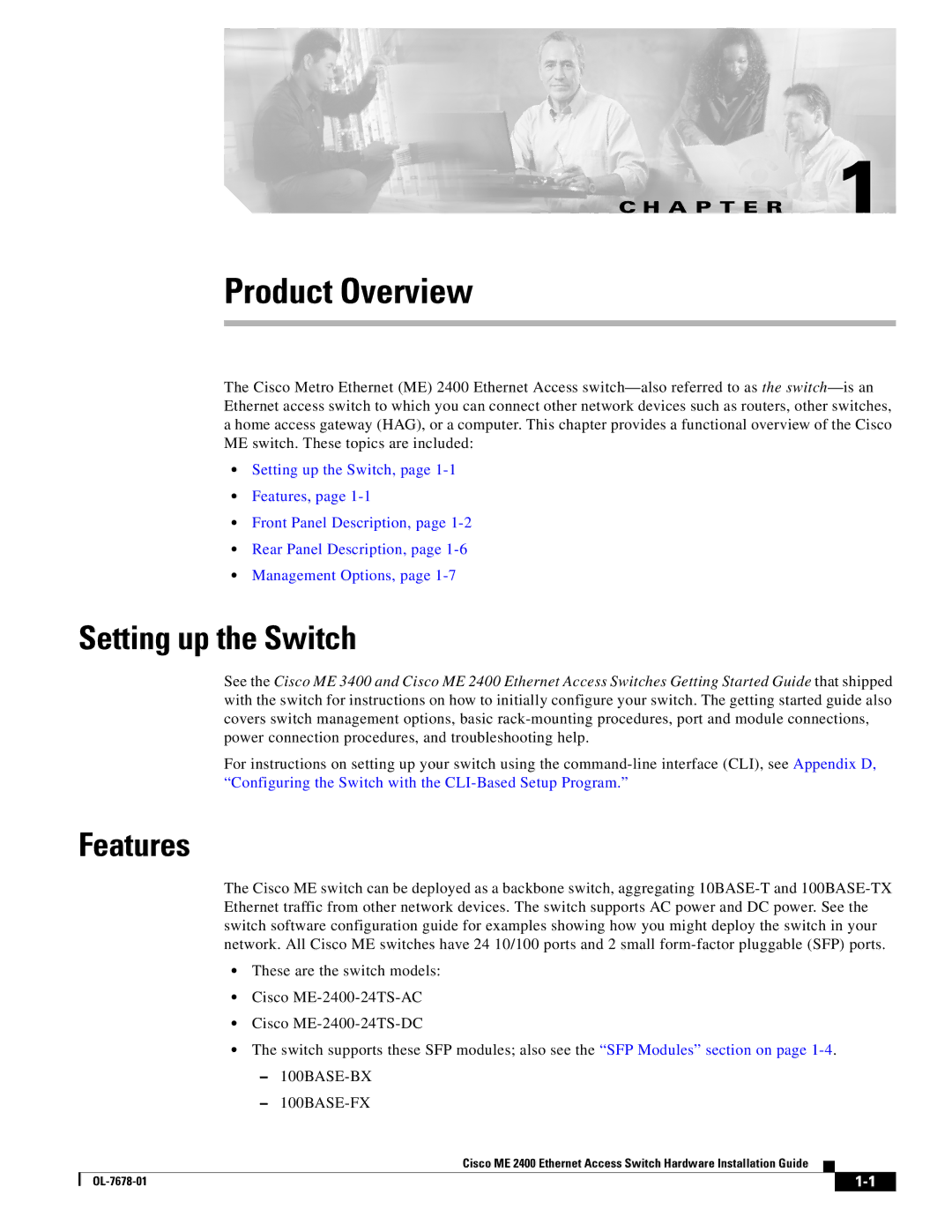C H A P T E R 1
Product Overview
The Cisco Metro Ethernet (ME) 2400 Ethernet Access switch—also referred to as the switch—is an Ethernet access switch to which you can connect other network devices such as routers, other switches, a home access gateway (HAG), or a computer. This chapter provides a functional overview of the Cisco ME switch. These topics are included:
•Setting up the Switch, page 1-1
•Features, page 1-1
•Front Panel Description, page 1-2
•Rear Panel Description, page 1-6
•Management Options, page 1-7
Setting up the Switch
See the Cisco ME 3400 and Cisco ME 2400 Ethernet Access Switches Getting Started Guide that shipped with the switch for instructions on how to initially configure your switch. The getting started guide also covers switch management options, basic rack-mounting procedures, port and module connections, power connection procedures, and troubleshooting help.
For instructions on setting up your switch using the command-line interface (CLI), see Appendix D, “Configuring the Switch with the CLI-Based Setup Program.”
Features
The Cisco ME switch can be deployed as a backbone switch, aggregating 10BASE-T and 100BASE-TX Ethernet traffic from other network devices. The switch supports AC power and DC power. See the switch software configuration guide for examples showing how you might deploy the switch in your network. All Cisco ME switches have 24 10/100 ports and 2 small form-factor pluggable (SFP) ports.
•These are the switch models:
•Cisco ME-2400-24TS-AC
•Cisco ME-2400-24TS-DC
•The switch supports these SFP modules; also see the “SFP Modules” section on page 1-4.
–100BASE-BX
–100BASE-FX
Cisco ME 2400 Ethernet Access Switch Hardware Installation Guide

